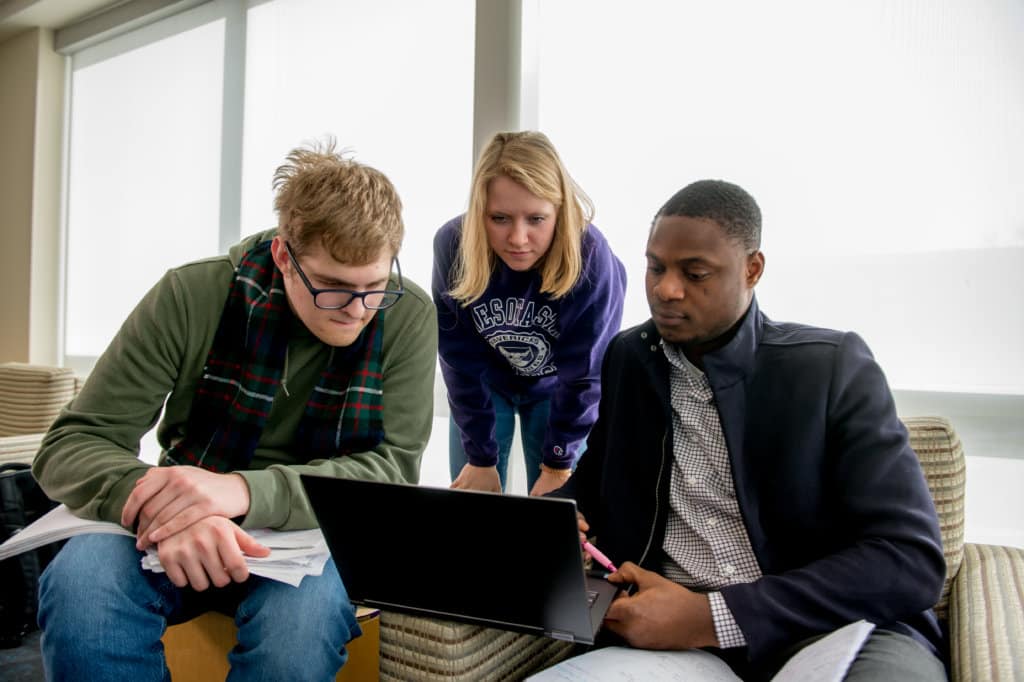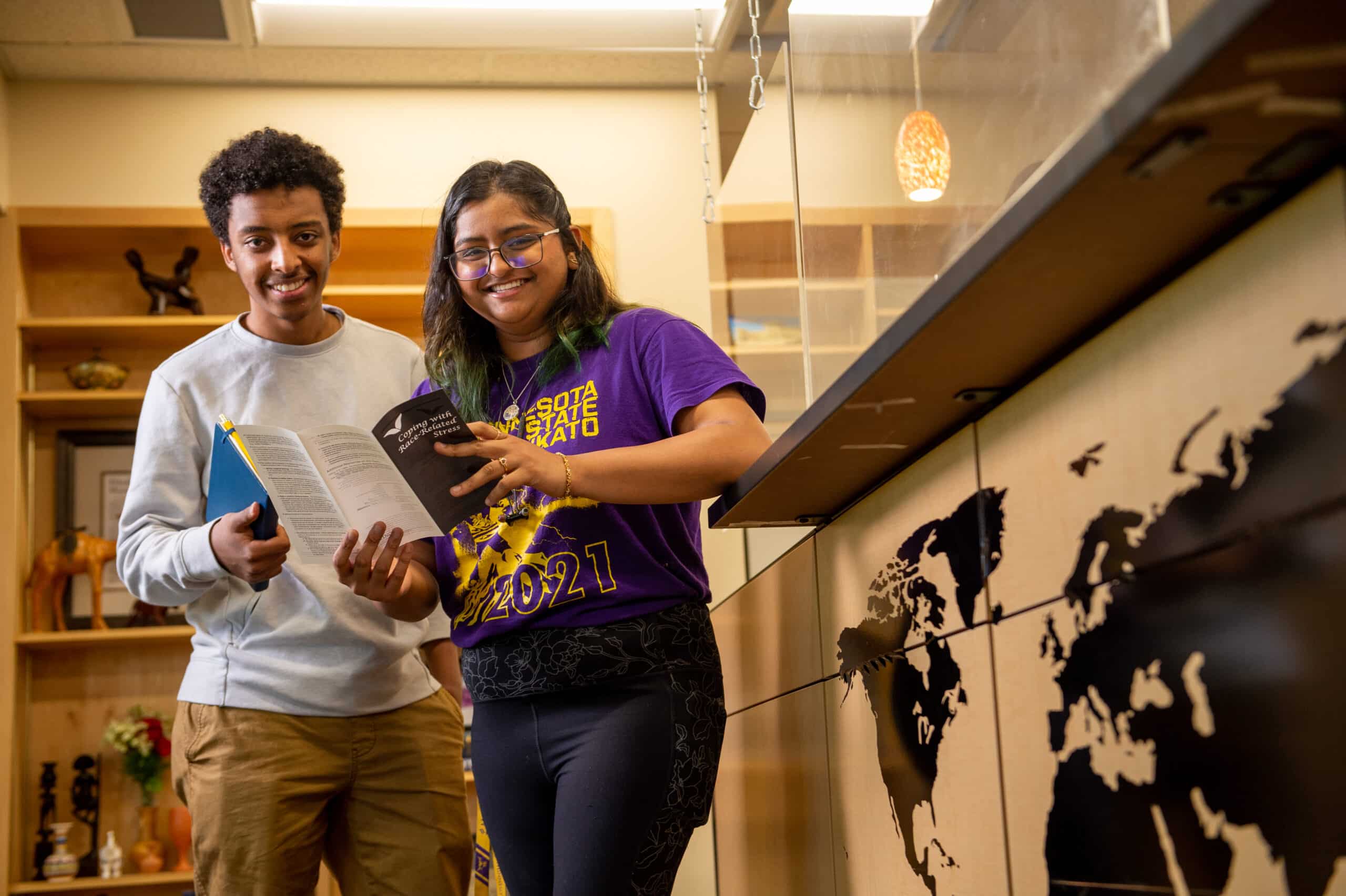Artificial intelligence. Machine learning. Digital twins. These are just three tools out of countless many to advance humankind through civil engineering, according to Dr. Basak Bektas, an Assistant Professor in Civil Engineering at Minnesota State University, Mankato.
“A digital twin of assets, such as bridges, can provide a more complete and accurate picture of current conditions. The digital twin can begin as a reality model, which can be modelled using artificial intelligence and machine learning of the bridge for future improvement needs,” says Bektas.
To thrive in a field as dynamic as engineering, a degree tailored to current industry needs helps — a lot. The Bachelor of Science in Civil Engineering (BSCE), accredited by the Engineering Accreditation Commission of ABET, does just that – with an evolving curriculum that provides students with the know-how on the latest trends.
“Our programme is planning to add courses such as Building Information Modelling to our curriculum. These concepts have been presented to our students for the past two years through a new course on Transportation Asset Management, in addition to discussions in the Transportation Engineering course,” says Bektas.
As a civil engineering student, you’ll develop your knowledge of calculus and physics, engage in engineering coursework and participate in a year-long senior capstone design project. You’ll learn to identify, formulate and solve complex engineering problems by applying principles of engineering, science, and mathematics.
The goal? For students to pass professional examinations, do well in their chosen careers and seek solutions to real-world problems. That’s why many Minnesota State Mankato graduates are making their marks as civil engineers, construction managers, urban and regional planners, landscape architects, and surveyors.

The BSCE programme starts with a foundation based on calculus and physics, followed by engineering coursework, and a year-long senior capstone design project. Source: Minnesota State University, Mankato
Such trajectories are made possible with the experiential learning opportunities on campus. Picture learning in small faculty-led classes and working in state-of-the-art labs. This includes instructional and research laboratories with modern equipment for undergraduate civil engineering programmes.
Familiarise yourself with the procedures of performing uniaxial tests, conducting non-destructive testing and the stress-strain behaviour of selected materials at the Structural Testing Lab. Design best management practices to encourage construction and land management activities integrated with high-quality environmental actions at the Environmental Lab. Tinker with professional software like AutoDESK Civil 3D, ArcGIS, and HydroCAD at the Computer-Aided Drafting Lab.
At Minnesota State Mankato, aspiring civil engineers have unique opportunities to work with industry partners in the community. For example, Dr. Stephen J. Druschel led a group of students to study highways all over southern Minnesota for techniques of salting and ploughing that balance environmental safety with what roadways need under challenging conditions.
“What we’re finding is [that] Minnesota’s DOT (Department of Transportation) is pretty good at taking care of the roads,” says Druschel. “Mostly, it’s this balancing act between clearing them quicker. Everyone would like that as a driver, but doing so would harm the environment too much. Where is that balance line?”
Students also participate in undergraduate research with faculty members in the civil engineering programme, including writing and submitting academic papers with their mentors. Some travelled to the National Conference on Undergraduate Research.

Here, students and faculty members collaborate closely to conduct meaningful research Source: Minnesota State University, Mankato
It all contributes — meaningfully — towards the BSCE curriculum. “Our faculty is active in research projects that explore these innovative technologies and their implementation,” says Bektas. “Our scholarly activities help us bring cutting-edge concepts into our classrooms and keep a modern curriculum that prepares our students for current trends and near future needs of the sector.”
Mat Thibert is one of many graduates who benefitted from this curriculum. “Throughout my education, I was encouraged to apply for summer internships, provided with opportunities to assist in research and solved practical, real-world problems in the classroom,” he says. “This additional knowledge helped me understand challenges present in the field and respect the unknowns on all construction sites.”
Internship vacancies on the Department of Mechanical and Civil Engineering’s website include openings with the Jackson County Public Works Department, Washington County Public Works Department, Environmental Tillage Systems, and more. Apart from experiential learning, students can be hired full-time with the same company.
Little wonder why the BSCE programme is popular among international students, with approximately 25% of students coming from outside the US. Upon graduation, some returned to their home countries to practise engineering. Those that stayed found jobs, qualified as professional engineers or advanced to graduate school.
Ready to join this engaging engineering community? Click here to learn how you can apply for the BSCE programme.
Follow Minnesota State University, Mankato on Facebook, Twitter, LinkedIn, YouTube, and Instagram.












